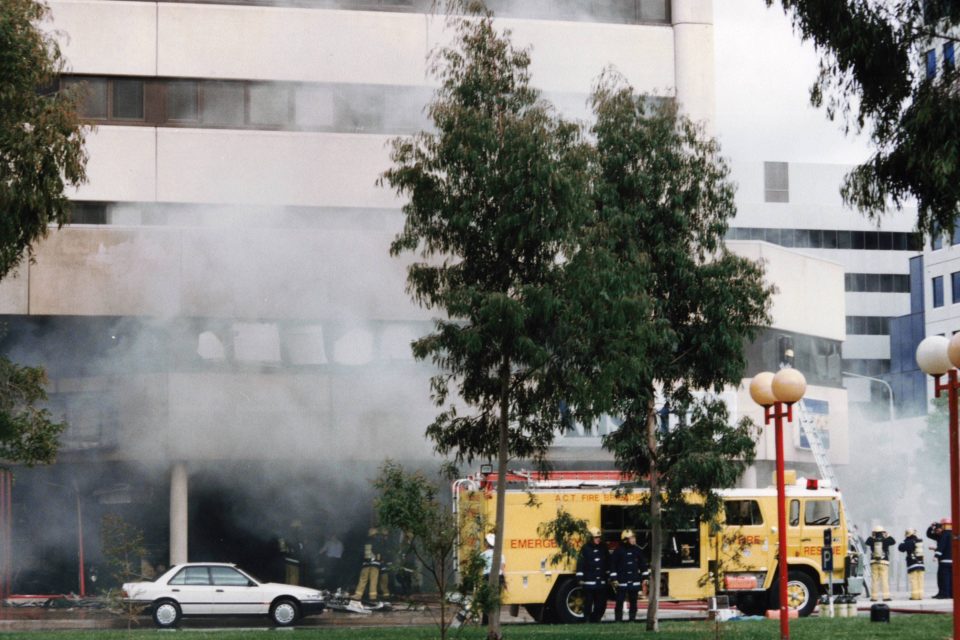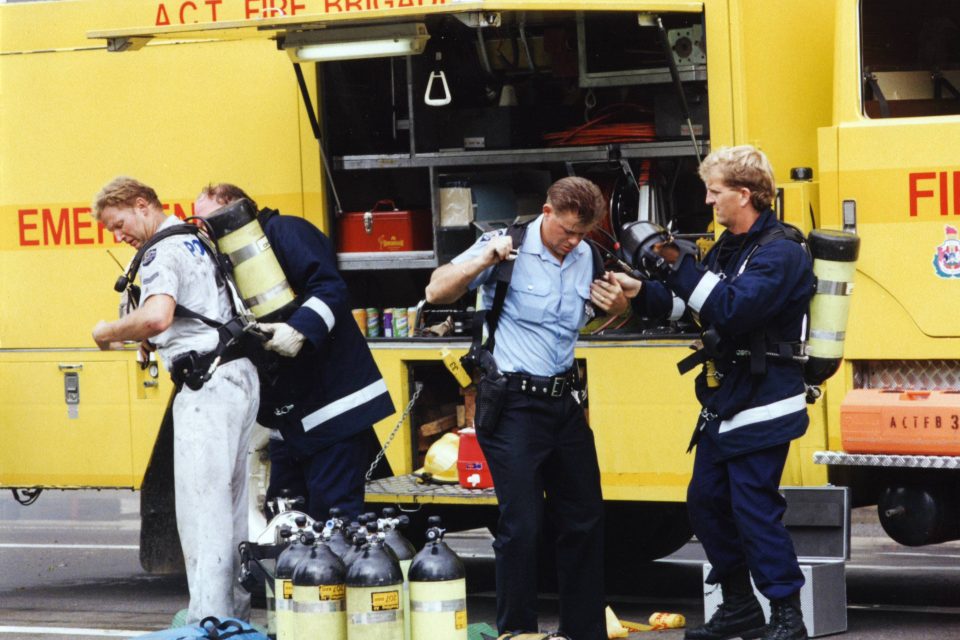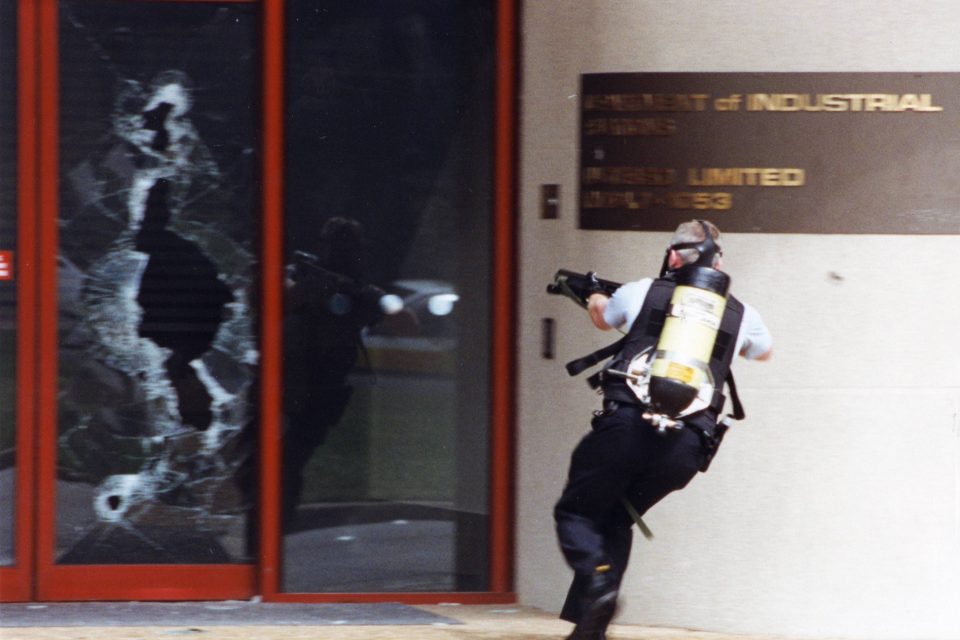
The efforts of both emergency services teams were hampered by the gunfire coming from the building. Photo: AFP.
Thirty years ago today, Canberra was rocked by a gunman who shot a man at a pool, blew up his own car and opened fire in the Jolimont Centre before finally turning the gun on himself.
On Wednesday (29 November), the Australian Federal Police (AFP) paid tribute to the officers who risked their lives to protect the community during what is now known as the Jolimont Siege.
Police had been called to the Dickson Swimming Pool on 29 November 1993 after the pool’s manager, Geoff McGibbon, was shot by his then-girlfriend’s ex-partner, a 47-year-old by the name of Felipe Ruizdiaz.

Today marks 30 years since the infamous 1993 Jolimont Siege, which saw an explosion and gunfire in Canberra. Photo: AFP.
Officers arrived within minutes and locked down the pool, but the sawn-off shotgun-wielding Ruizdiaz had already fled in his ute and went on to crash his car through the glass doors of the Jolimont Centre. This was where his ex-wife worked, although she was not there that day.
Ruizdiaz reversed and drove inside the centre again, crashing into a travel company office.
His ute exploded seconds later, shattering the glass windows of the building, engulfing the vehicle in flames and setting fire to the centre.
He set off the explosion by igniting gas cylinders and petrol bombs he’d brought to the site.
Pedestrians fled while he shouted, “Get back”, then began firing his weapon.
Fortunately, no members of the public were injured by the gunshots or the fire and all of the centre’s occupants were successfully evacuated.
Firefighters arrived and began pumping thousands of litres of water onto the fast-spreading flames while police focused on corralling members of the public and assessing the situation.
The efforts of both emergency services teams were hampered by the gunfire coming from the building.
One responder was then-constable and now-sergeant Mark Usback, who had just completed his basic Specialist Operation Team (SOT) operator’s course three days earlier.
In 1993, the AFP SOT, now known as Special Operations, was a small, part-time unit whose members undertook routine general policing, traffic enforcement or investigative duties until they were called for tactical taskings.
Working under the instructions of long-term SOT operator Detective Constable Darren Rath, who has since retired, Sergeant Usback and two others entered the scene with their sidearms drawn.






With no other protective equipment and the heat and smoke soon beating them back, he can still vividly recall the moment he went inside.
“I will never forget the first entry. It was just an overload to the senses with noises like alarms, and smoke,” he said.
“What literally stopped me in my tracks was being overawed by a waterfall in front of me, cascading down the front of the elevators.
“I just went, what’s that doing there? And then it occurred to me – it was all of the water the firefighters had pumped in which had turned this place into a rainforest with its own internal waterfall.”
Sergeant Usback said he became worried when he couldn’t see his hand in front of his face because the smoke was so thick.
“I was thinking that I was literally going to bump into the offender, and while I was confident in my skills, it was a different story when I couldn’t see him,” he said.
Officers searched the building but were limited by the amount of air they carried in their breathing apparatuses.

In 2009, the AFP said $5 million worth of damage had been caused to the building by the Jolimont Siege in 1993. Photo: AFP.
It was almost impossible to hear each other because of the sound-dampening qualities of the breathing apparatus masks, the loud mechanical noise made by breathing apparatus sets when operators breathed, and the sounds of the fire.
The group had to use hand signals in the fleeting moments they could see each other in the smoke.
Ruizdiaz’s body was eventually found with self-inflicted gunshot wounds. A coronial inquest formally established that he was responsible for the shootings, explosion, fire and suicide.
In 2009, the AFP said about $5 million worth of damage had been caused to the building.
“The so-called Jolimont Siege was a watershed moment for Canberra’s police – an ‘active armed offender’ situation which tested the territory’s emergency agencies to the limit,” the AFP said.















